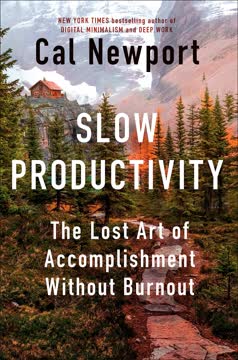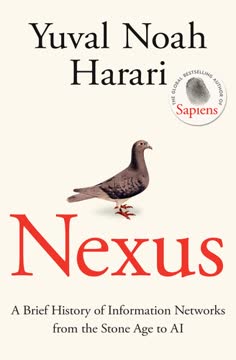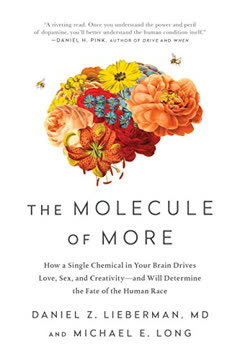Key Takeaways
1. We didn't evolve to exercise, but to be physically active for survival
Exercise today is most commonly defined as voluntary physical activity undertaken for the sake of health and fitness. But as such it is a recent phenomenon.
Exercise is a modern concept. Our ancestors didn't "exercise" in the way we think of it today. They were physically active out of necessity - hunting, gathering, and surviving. This fundamental difference explains why many people struggle with exercise today. Our bodies are designed to conserve energy when possible, making voluntary exertion counterintuitive.
Physical activity was integral to survival. Hunter-gatherers walked miles daily, carried heavy loads, and engaged in intense bursts of activity when hunting. This lifestyle kept them naturally fit without the need for planned exercise routines. The shift to agricultural and then industrial societies gradually reduced the need for constant physical activity, leading to our current sedentary lifestyles.
Modern exercise is a response to inactivity. As our daily lives became less physically demanding, exercise emerged as a way to maintain health. This explains the relatively recent rise of gyms, fitness classes, and structured workout routines. Understanding this evolutionary context can help us approach exercise more effectively, by aligning our activities with our body's natural tendencies.
2. Inactivity is natural, but excessive sitting can be harmful
We are exercised about exercise.
Resting is evolutionarily normal. Our bodies are designed to conserve energy when possible, which is why lounging feels natural. However, the modern world has taken this to an extreme with prolonged sitting, especially in office environments.
Excessive sitting has health consequences. While some inactivity is natural, sitting for hours on end can lead to:
- Increased risk of chronic diseases
- Reduced metabolic health
- Muscle weakness and atrophy
- Poor posture and back problems
Active sitting and regular movement are key. To counteract the negative effects of prolonged sitting:
- Take frequent short breaks to stand and move
- Use standing desks or active sitting tools (like balance balls)
- Incorporate light activity throughout the day (walking meetings, taking stairs)
- Practice good posture and ergonomics when sitting is necessary
3. Sleep is crucial, but quality matters more than quantity
You are the sweating champions of the animal world.
Sleep is not just about rest. While sleep is a form of inactivity, it serves critical functions for our bodies and minds. It's not merely the absence of wakefulness, but an active process of restoration and cognitive processing.
Quality over quantity. The often-cited "8 hours" rule is not universally applicable. Sleep needs vary by individual and circumstance. Factors affecting sleep quality include:
- Sleep cycle consistency
- Environment (darkness, temperature, noise)
- Pre-sleep activities and routines
- Stress levels and mental state
Evolutionary context of sleep. Our ancestors likely had different sleep patterns than modern humans. They may have slept in shorter bouts throughout the day and night, adapted to their environment and safety needs. Understanding this can help us be more flexible in our approach to sleep and less anxious about rigid sleep rules.
4. Humans aren't built for speed, but for endurance
We humans are slow, weak, vulnerable creatures more dependent on brains than brawn.
Humans are slow compared to most animals. Even the fastest human sprinters are no match for many four-legged animals in short bursts. This is due to our bipedal locomotion and lack of specialized sprinting adaptations.
Endurance is our superpower. While we can't outrun most animals in a sprint, humans have exceptional endurance capabilities:
- Efficient bipedal walking and running
- Superior thermoregulation through sweating
- Mental toughness and strategic thinking
Persistence hunting as an evolutionary advantage. Our ancestors likely used their endurance capabilities to hunt prey by chasing them to exhaustion. This "persistence hunting" technique showcases how our seemingly inferior speed was compensated by superior stamina and intelligence.
5. Strength has limits, but consistent resistance training is beneficial
From these various lines of evidence, it seems that Neanderthals and other archaic humans from the Ice Age, like chimpanzees, were moderately more muscled than the average Joe, including contemporary hunter-gatherers.
Humans aren't naturally super strong. Compared to our closest ape relatives and some of our evolutionary ancestors, modern humans are not exceptionally strong. This is likely due to trade-offs that favored endurance and cognitive abilities over raw strength.
Resistance training is crucial for modern health. Despite not evolving for extreme strength, resistance training offers numerous benefits:
- Increased muscle mass and strength
- Improved bone density
- Enhanced metabolic health
- Better functional capacity in daily life
Consistency is key in strength training. Regular, moderate resistance training is more beneficial and sustainable than sporadic, extreme efforts. Focus on:
- Progressive overload (gradually increasing weight or resistance)
- Proper form and technique
- Balanced full-body workouts
- Adequate recovery and nutrition
6. Fighting and sports reflect our evolutionary past
Humans haven't stopped fighting altogether. Instead, we have changed the way we fight and how often.
Fighting and sports are ritualized forms of aggression. While humans have become less violent overall, we've channeled our aggressive instincts into more controlled forms like sports and martial arts.
Sports serve multiple evolutionary functions:
- Skill development for survival and warfare
- Social bonding and group cohesion
- Demonstration of fitness for mate selection
- Stress relief and emotional regulation
Modern sports as exercise. While our ancestors didn't "exercise" for health, modern sports and games provide a culturally acceptable and enjoyable way to engage in physical activity. This aligns with our evolutionary tendencies while meeting modern health needs.
7. Walking is fundamental to human health and evolution
If there is any single exercise prescription we repeatedly hear, it is to walk about ten thousand steps a day.
Walking defined human evolution. The ability to walk efficiently on two legs was a crucial adaptation that set humans apart from other primates. This bipedal locomotion freed our hands for tool use and carrying, shaping our entire evolutionary path.
Walking offers numerous health benefits:
- Improved cardiovascular health
- Better weight management
- Enhanced mood and mental health
- Reduced risk of chronic diseases
The 10,000 steps goal is arbitrary but useful. While not based on specific scientific evidence, aiming for 10,000 steps (about 5 miles) per day is a good target for most people. It encourages consistent, moderate activity throughout the day, aligning with our evolutionary heritage.
8. Running and dancing are uniquely human endurance activities
Running and dancing are lifelong pursuits.
Running and dancing showcase human endurance. Both activities require sustained physical effort, demonstrating our species' unique capacity for prolonged, rhythmic movement.
Evolutionary significance:
- Running: Likely evolved for persistence hunting and long-distance travel
- Dancing: Serves social bonding, mate selection, and possibly trance-like states for spiritual experiences
Modern benefits of running and dancing:
- Improved cardiovascular health
- Enhanced cognitive function
- Stress relief and emotional expression
- Social connection and community building
9. Exercise slows aging and promotes longevity
The more calories we need, the more we are vulnerable to not having enough.
Physical activity triggers repair mechanisms. Regular exercise stimulates the body to repair and maintain tissues, slowing the aging process. This "use it or lose it" principle applies to muscles, bones, and even cognitive function.
Exercise affects aging at the cellular level:
- Improved mitochondrial function
- Enhanced telomere maintenance
- Reduced chronic inflammation
- Better insulin sensitivity and metabolic health
Consistency matters more than intensity. While high-intensity exercise has benefits, consistent moderate activity throughout life appears to have the most significant impact on longevity and health span.
10. Making exercise necessary and enjoyable is key to consistency
Just as we have a right to smoke despite its unhealthy effects, don't we also have the right not to exercise?
Overcoming evolutionary inertia. Our instinct to conserve energy makes consistent exercise challenging. To overcome this, we need to make exercise feel necessary and enjoyable.
Strategies for making exercise necessary:
- Schedule it like any other important appointment
- Make social commitments to exercise with others
- Set concrete goals or sign up for events (like races)
- Use "temptation bundling" (pair exercise with enjoyable activities)
Making exercise enjoyable:
- Choose activities you genuinely like
- Vary your routines to prevent boredom
- Exercise in pleasant environments (nature, music, etc.)
- Focus on the immediate benefits (improved mood, energy) rather than long-term health goals
11. There's no one-size-fits-all exercise prescription
After much deliberation, the judges have determined there is no best way to exercise.
Individual variation is crucial. Factors like age, genetics, fitness level, health status, and personal preferences all influence the ideal exercise regimen for an individual.
General guidelines are a starting point. While recommendations like 150 minutes of moderate activity per week provide a useful baseline, they should be adapted to individual needs and capabilities.
Key principles for personalized exercise:
- Start where you are, not where you think you should be
- Gradually increase intensity and duration
- Listen to your body and adjust as needed
- Include a mix of aerobic, strength, and flexibility training
- Find activities you enjoy and can sustain long-term
Consult professionals when needed. For those with health concerns or specific goals, working with a doctor, physical therapist, or certified trainer can help develop a safe and effective personalized exercise plan.
Last updated:
FAQ
What's Exercised: The Science of Physical Activity, Rest and Health about?
- Explores human evolution: The book examines how humans evolved in relation to physical activity, rest, and health, highlighting the necessity of movement for survival in hunter-gatherer societies.
- Challenges modern exercise myths: It debunks misconceptions about exercise, such as the belief that humans are naturally inclined to be active, and addresses the paradox of needing to exercise despite not evolving to do so.
- Integrates anthropology and biology: Daniel E. Lieberman combines insights from these fields to provide a comprehensive understanding of human physical activity, offering historical context for modern exercise habits.
Why should I read Exercised?
- Gain a new perspective: The book offers a fresh viewpoint on why exercise is essential for health, challenging the notion that it is a natural human behavior.
- Understand the science: It provides scientific explanations for how and why exercise affects our bodies, empowering readers to make informed health decisions.
- Practical insights: Lieberman offers advice on incorporating more movement into daily life, making it relevant for anyone struggling with inactivity.
What are the key takeaways of Exercised?
- Exercise is a modern construct: While beneficial, exercise is a relatively recent phenomenon in human history, with ancestors being active out of necessity.
- Inactivity is natural: Humans are evolutionarily predisposed to avoid unnecessary exertion, explaining struggles with modern exercise regimens.
- Importance of movement variety: Engaging in diverse physical activities enhances overall health and well-being, rather than focusing solely on structured exercise.
What are the best quotes from Exercised and what do they mean?
- “We never evolved to exercise.”: This encapsulates the book's thesis that exercise, as understood today, is not a natural behavior for humans.
- “We are exercised about exercise.”: Reflects societal pressure and anxiety regarding exercise habits, leading to confusion and guilt.
- “Nothing about the biology of exercise makes sense except in the light of evolution.”: Emphasizes understanding evolutionary history to make sense of current exercise needs.
How does Exercised define physical activity?
- Broad Definition: Physical activity includes any movement produced by skeletal muscles requiring energy expenditure, from walking to structured exercise.
- Types of Activity: Categorizes activities into aerobic, anaerobic, and resistance training, each offering distinct health benefits.
- Importance of Movement: Stresses that movement is essential for health, with bodies designed to be active for physical and mental well-being.
What myths about exercise does Exercised debunk?
- Myth of natural inclination: Challenges the belief that humans are naturally inclined to exercise, suggesting an evolutionary predisposition for inactivity.
- Sitting as the new smoking: Critiques the notion that sitting is inherently harmful, emphasizing inactivity as the real issue.
- Exercise as a magic pill: Argues that while beneficial, exercise is not a cure-all and should be understood in context.
How does Exercised relate to modern health issues?
- Links inactivity to health problems: Discusses how sedentary lifestyles contribute to obesity and chronic diseases, emphasizing the need for more movement.
- Promotes understanding of exercise benefits: Explains physiological effects of exercise, motivating individuals to incorporate more activity into routines.
- Encourages practical solutions: Offers actionable advice for overcoming exercise barriers, such as finding enjoyable activities and integrating movement into daily tasks.
What specific methods or advice does Exercised offer?
- Incorporate more movement: Suggests integrating physical activity into daily life, like walking or biking instead of driving.
- Focus on variety: Encourages engaging in a range of activities rather than a strict regimen, making movement more enjoyable and sustainable.
- Listen to your body: Advises paying attention to bodily cues and finding activities that feel good, reducing exercise-related anxiety.
How does Exercised address the relationship between sleep and physical activity?
- Sleep as inactivity: Discusses sleep as a natural state of inactivity essential for health, distinct from exercise.
- Impact on sleep quality: Regular physical activity can improve sleep quality and duration, highlighting movement's importance for well-being.
- Cultural perspectives: Explores how sleep practices vary across cultures, influencing modern sleep habits and patterns.
How does Exercised explain the connection between exercise and mental health?
- Exercise boosts mood: Physical activity enhances mood and reduces anxiety and depression symptoms through mood-enhancing chemicals.
- Cognitive benefits: Linked to improved cognitive function and memory, protecting against age-related decline.
- Social interaction: Engaging in activities with others provides social support, crucial for mental well-being, especially in older adults.
How does Exercised suggest we can improve our exercise habits?
- Set realistic goals: Advises setting achievable exercise goals that fit lifestyles, reducing guilt and anxiety.
- Find enjoyable activities: Emphasizes engaging in fun and fulfilling activities, making it easier to incorporate movement into daily life.
- Create a supportive environment: Suggests surrounding oneself with supportive friends and family to enhance motivation and adherence to routines.
What is the significance of the "hygiene hypothesis" in Exercised?
- Inflammation and health: Suggests reduced pathogen exposure in modern environments may lead to increased inflammation and chronic diseases.
- Physical activity as countermeasure: Regular exercise can mitigate chronic inflammation effects, promoting better health outcomes.
- Evolutionary perspective: Connects hypothesis to evolutionary history, arguing bodies are designed for certain microbial exposure levels, lacking in contemporary life.
Review Summary
Exercised explores why humans evolved to be physically active but not to exercise. Lieberman examines exercise from evolutionary and anthropological perspectives, debunking myths and providing evidence-based insights. Readers found the book informative, well-researched, and motivating, appreciating Lieberman's balanced approach and easy writing style. The book covers various aspects of physical activity, from hunter-gatherer lifestyles to modern exercise recommendations. While some felt it was repetitive or too long, most praised its comprehensive look at exercise's importance for health and longevity.
Similar Books








Download PDF
Download EPUB
.epub digital book format is ideal for reading ebooks on phones, tablets, and e-readers.





